
A terrorist attack at a luxury hotel and office complex in the Westlands area of Nairobi, Kenya has left 21 civilians dead and dozens more wounded or missing. Five attackers were also killed during the siege that began around 3pm on Tuesday, January 15th and ended just before 10am the next day. More than 700 people were safely evacuated during the attack. In a statement, the Somalia-based Al-Shabab group claimed the assault was retaliation for President Trump’s decision to recognize Jerusalem as the capital of Israel. The attack began at a bank inside the compound after a car bomb explosion ripped through three vehicles in the parking lot, followed by a blast from a suicide bomber in the lobby of the seven-story Dusit Hotel. The explosion triggered vehicles parked nearby to burst into flames. After the blast the remaining terrorists opened fire on guards, forcing them to open the gates of the complex at 14 Riverside Drive.
Kenyan authorities believe there were four to six attackers armed with guns and grenades. Security camera footage released to local media outlets showed at least four armed men inside the complex as well as footage of the suicide bomber who calmly walked into the lobby and self-detonated a suicide vest. The coordinated attack lead to a standoff that continued through the night, with people trapped in various parts of the buildings hours later. The Recce company, the anti-terrorism unit of the Kenya Police, were sent in to combat the militants. A member of the British SAS and an unspecified number of United States Navy SEALs, who were in the country to conduct training, also took part in the response. Australian embassy security detail also exchanged fire with the terrorists as they made their way into the complex.
According to Inspector General of Police Joseph Boinett, sixteen Kenyans, one Briton, one American and three unidentified people of African origin are among the dead and twenty-eight others have been hospitalized. Among the dead was U.S. businessman Jason Spindler, who in 2001 survived the September 11 attacks on the World Trade Center. He was co-founder and managing director of I-DEV International, a firm advising on business strategy for emerging markets. A British man is also among the dead and was later identified by the development organization Gatsby Africa as Luke Potter, head of its forestry and tea portfolio.
A few of the victims identified in the attack were: James Oduor, who worked at one of the offices inside the complex. Oduor was trapped inside the complex in the hours after the initial blasts and sent out a tweet at 2:05am that read “Waaah. What’s happening at 14 Riverside fam? Any news from out there?” Another victim, Bernadette Konjalo, worked at the Dusit Hotel, and was shot as she ran away from an armed attacker after helping hotel guests find safety. Also killed were Kenyan development consultants Feisal Ahmed, 31, and Abdalla Dahir, 33, who worked for Adam Smith International (ASI). Described as “inseparable buddies’ by friends, the two were killed as they were having lunch at the Secret Garden restaurant in the grounds of the hotel when the suicide bomber struck. Mr Ahmed’s widow is reportedly seven months pregnant.
After the attack, the militant group Al-Shabab, said “In a response to the witless remarks of US President Donald Trump and his declaration of Jerusalem as the capital of Israel,” the group targeted “Western and Zionist interests worldwide … in support of our Muslim families in Palestine.” In 2013, Al-Shabaab militants targeted the luxury shopping center of Westgate, which is 2 miles away from the site of Tuesday’s attack, killing 67 people in a siege that lasted several days. The group also killed nearly 150 people, most of them students, in an attack on Garissa University College in Kenya in April 2015.
Read more
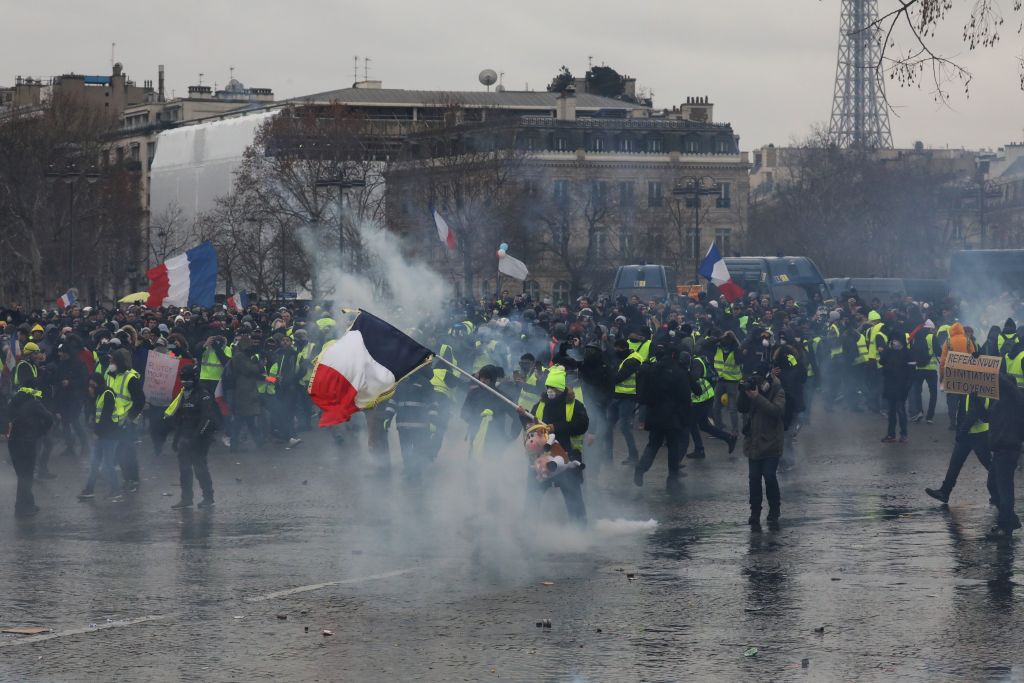
In France, the “yellow vest” protesters took to the streets again over the weekend. The protests against a fuel tax erupted on November 17th 2018 when people across France donned high-visibility vests, giving them their nickname the yellow vests, and went out to disrupt traffic. Similar actions have followed every weekend and while the number of demonstrators has dropped, cities across France continue to see rioting and disruption. At least six people have died and at least 1,400 have been injured as a result of the unrest.
What began as anger over green tax on vehicle fuel has grown into more general discontent with the leadership of President Emmanuel Macron, who protesters accuse of favoring the urban elite. The intensity of the protests forced the government to halt the plans for the fuel tax hike but demonstrators called for additional economic reforms, and many for the resignation of President Emmanuel Macron. While Macron said the tax was necessary to “protect the environment” and “combat climate change”, protesters claimed the decision was yet another sign that the “privileged” president is out of touch with regular folk struggling to make ends meet.
President Emmanuel Macron delivered a national address announcing he would raise the minimum wage and cancel a tax increase on low-income retirees. He also proposed some social reforms, including an increase in the minimum wage by 100 euros ($113) a month beginning in January that will not cost employers extra and a promise that overtime hours will not be taxed. While Macron’s announcement appeased some demonstrators, many continue to take to the streets.
Last week, a group of protesters in Paris rammed a forklift into a government ministry building, while violent confrontations between some demonstrators and police took place in the capital. French security forces fired tear gas and flash-balls after a march through picturesque central Paris turned violent. Rioters started fires on the prestigious Boulevard Saint Germain in Paris. Police boats patrolled the river while beyond the Seine, motorcycles and a car were set on fire on the Boulevard Saint Germain. Riot police and firefighters moved in with a water canon as barricades mounted in the middle of the wide street burned.
A reported 50,000 people across the country came out as the movement is now in its second month of protests. While the number of rioters has dwindled from the 280,000 that joined the protests in November, the disruption and destruction of property continues. The march had been declared in advance and approved, in contrast to some illegal December demonstrations that degenerated into vandalism, looting and chaos.
After two months of civil unrest, the government has declared it will crackdown on the disruption. Prime Minister Philippe said the government would support a “new law punishing those who do not respect the requirement to declare protests, those who take part in unauthorized demonstrations and those who arrive at demonstrations wearing face masks”. Known troublemakers would be banned from taking part in demonstrations, in the same way known football hooligans have been banned from stadiums.
Read more
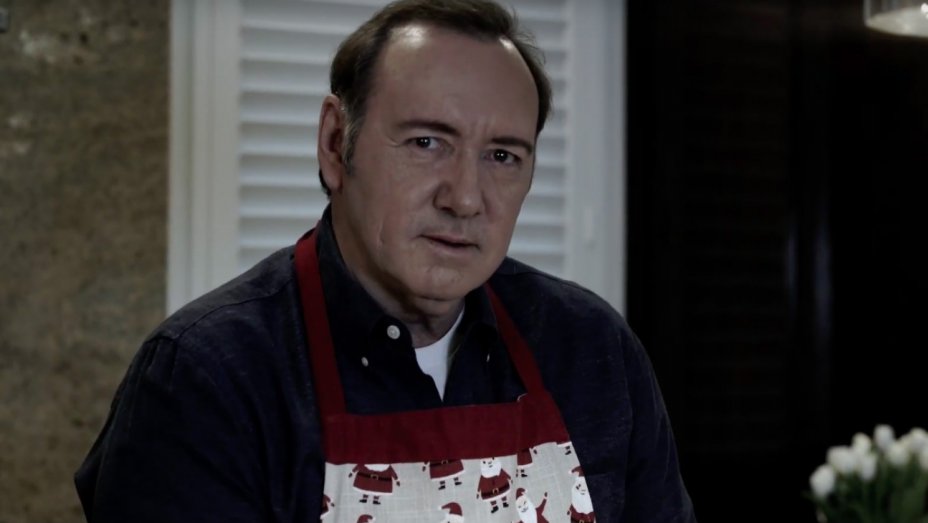
The actor Kevin Spacey has been charged with felony sexual assault for allegedly sexually assaulting a teenager in a bar in Massachusetts in 2016. A public show-cause hearing was held for the case Dec. 20 where Clerk Magistrate Ryan Kearney issued a criminal complaint for the charge against Kevin S. Fowler, also known as Kevin Spacey. Spacey is due in court on January 7 to face the felony charge that could bring him up to five years in prison. Spacey has denied the charges.
The alleged assault on a male victim took place at a Nantucket bar in July 2016. Last year, former Boston TV news anchor Heather Unruh held a press conference to share her son’s allegation of sexual assault against Spacey. She stated that her then 18-year-old son said was sexually assaulted by Spacey inside the Club Car Restaurant on Nantucket. Unruh says her son was not of legal drinking age but had told Spacey he was and that the actor bought him drink after drink after drink. “My son was a starstruck, straight 18-year-old young man who had no idea that the famous actor was an alleged sexual predator or that he was about to become his next victim,” she said at the time. “When my son was drunk, Spacey made his move and sexually assaulted him.”
The Nantucket Police Department began its criminal investigation in November 2017, said Massachusetts attorney Mitchell Garabedian, the attorney for the alleged victim. The department has since transferred the case to the district attorney’s office. Garabedian said in a statement, “The complainant has shown a tremendous amount of courage in coming forward. Let the facts be presented, the relevant law applied and a just and fair verdict rendered.” Multiple men have come forward with accusations of sexual assault and harassment against Spacey since October 2017, which prompted Netflix to abruptly cut ties with and drop the actor from its hit political drama House of Cards. Spacey is still under investigation in Los Angeles and in England for other alleged sexual assaults.
Soon after the charges were filed against Spacey, the actor posted a bizarre video to his Twitter account where he portrays his House of Cards character Frank Underwood. The actor addresses his House of Cards fate while also saying that he knows his fans want him back. “I know what you want,” Spacey begins in Frank’s accent. “Oh sure, they may have tried to separate us, but what we have is too strong, too powerful. After all, we shared everything, you and I. I told you my deepest, darkest secrets. I showed you exactly what people are capable of. I shocked you with my honestly, but mostly I challenged you and made you think. And you trusted me, even though you knew you shouldn’t. So we’re not done, no matter what anyone says. And besides, I know what you want. You want me back.”
“Of course, some believed everything and have been just waiting with bated breath to hear me confess it all. They’re just dying to have me declare that everything said is true and that I got what I deserved. Only you and I both know it’s never that simple, not in politics and not in life,” he says. “All this presumption made for such an unsatisfying ending, and to think it could have been such a memorable sendoff.” He goes on to say that in both life and in art, nothing should be off the table: “I can promise you this. If I didn’t pay the price for the things we both know I did do, I’m certainly not going to pay the price for the things I didn’t do.” Spacey ended the 3 minute video by directly calling out his death on House of Cards. The actor puts on Frank’s signature ring before walking off. “My confidence grows each day that soon enough, you will know the full truth,” he says. “Wait a minute, now that I think of it, you never actually saw me die, did you? Conclusions can be so deceiving.”
Read more
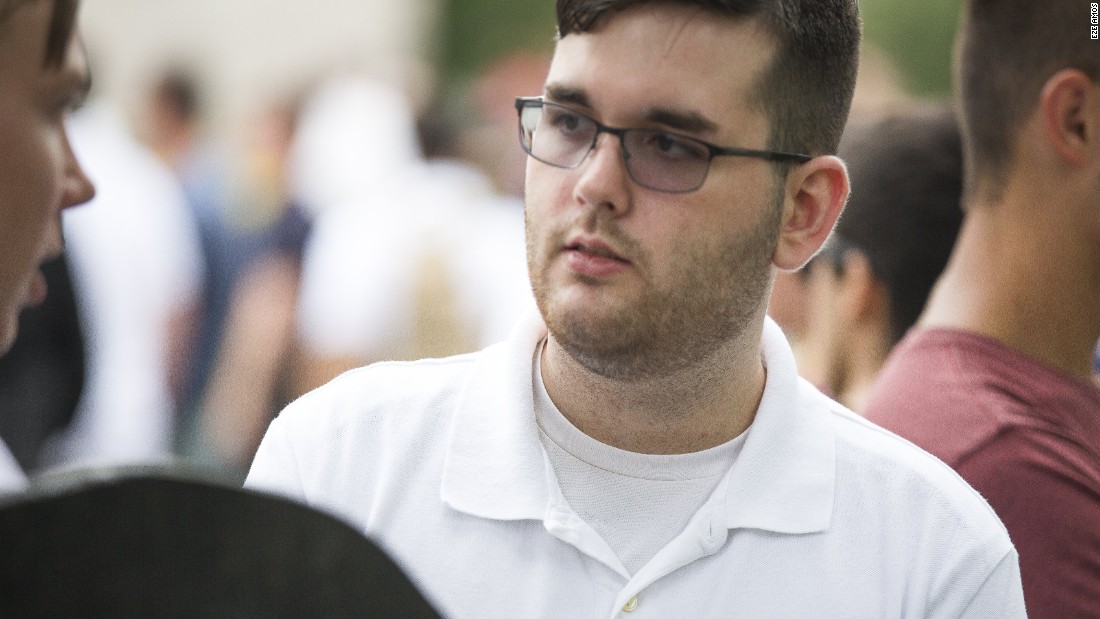
James A. Fields Jr., the neo-Nazi who rammed his car into a group of counter-protesters at the Unite The Right rally on August 12, 2017, has been sentenced to life for first-degree murder; 70 years for each of five counts of aggravated malicious wounding; 20 years for each of three counts of malicious wounding; and nine years for leaving the scene of a fatal crash. The jurors were instructed that the sentences would be “presumed to be consecutive” unless they recommended that the terms be served simultaneously. Fields’s overall sentence: life plus 419 years and $480,000 in fines.
The jury of seven women and five men convicted Fields of the 10 offenses in a Charlottesville Circuit Court. In Virginia, trial juries determine what penalties should be handed out within sentencing ranges dictated by law. Judge Richard E. Moore, who said he will formally sentence Fields on March 29th, can impose a lesser punishment than the jurors called for but is not allowed to increase the sentences.
During the trial, Fields psychiatric disorders dating to early childhood were detailed in court by a mental-health expert. Psychologist Daniel Murrie testified that Fields was diagnosed with bipolar disorder at the age of 6 and has been prone to angry, sometimes violent outbursts since before he could walk and was “expelled from preschool” because of his volatile behavior. As an adolescent, he was found to have schizoid personality disorder and was housed in psychiatric facilities for three stretches before his 15th birthday.
Murrie testified that Fields did not meet Virginia’s legal definition for not guilty by reason of insanity. To be acquitted on the basis of insanity, a defendant must show that he did not understand the difference between right and wrong at the time of the offense or was mentally unable to control his actions. Fields did not deny that he intentionally accelerated his Dodge Challenger into a group of counter-protesters, killing Heather Heyer and injuring 19 others. His lawyers contended that he was afraid for his safety and acted to protect himself but jurors rejected that argument and issued 10 guilty verdicts.
Several of the injured victims, testified at Fields’s trial and sentencing hearing, described lasting physical wounds, psychological anguish and dire financial distress. They described their injuries including shattered bones and debilitating nerve damage that they may never fully recover from. They spoke of nightmares, social isolation caused by post-traumatic stress disorder and crushing medical bills from surgeries that have depleted their insurance and could burden them far into the future.
Fields faces a separate federal trial for alleged hate crimes related to the incident, including one offense that carries a possible death sentence. No trial date has been set and the Justice Department has not said whether it will seek capital punishment.
Read more
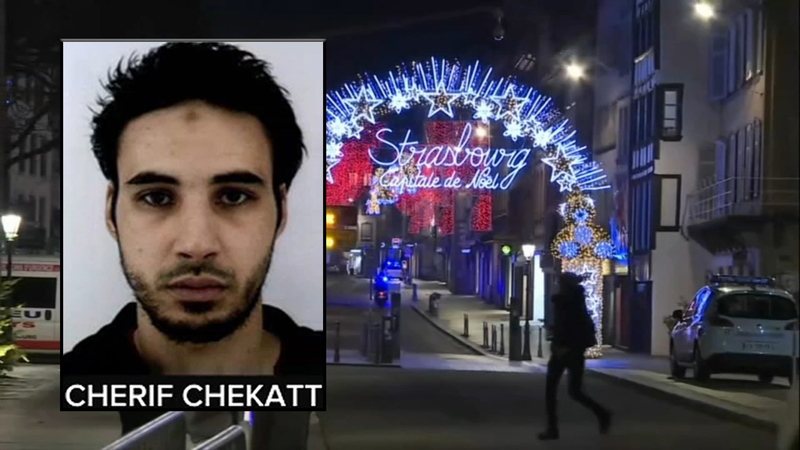
French Police have shot and killed 29-year-old Chérif Chekatt, the suspected gunman of the attack at an outdoor Christmas market in the northeast city of Strasbourg which killed five people and injured 11 others. French authorities say Chekatt had multiple criminal convictions and was on a security services watchlist as a suspected Islamist extremist. Chekatt was reportedly scheduled to be arrested for an armed robbery and attempted murder charge on the day of the shooting.
He was known to security services for a total of 27 convictions in France, Germany, and Switzerland, with 67 recorded crimes in France alone. French police considered him a “gangster-jihadist”, a term referring to people convicted of various crimes and “radicalized” in prison. Chekatt was released from prison in France in 2015, then received a prison sentence for theft in Singen, Germany and was expelled to France after his release in 2017.
On December 11th, just before 8pm, Chekatt allegedly entered the outdoor market area and opened fire in three different areas. The shooting lasted ten minutes and was heard shouting “Allahu akbar” as he fired into the crowd. He also attacked people with a knife before exchanging fire with soldiers of Opération Sentinelle and with the National Police. Despite being shot in the arm during the shootout with authorities, he escaped the area in a taxi cab. The cab driver was unharmed and reported having taken an armed and wounded man from the area to police immediately.
France issued the highest level of security alert and two days later Chekatt was killed in a shootout with French police after a manhunt involving 700 officers. An investigation was initiated after the attack and four people close to Chekatt were detained for questioning after the shooting. Those detained were his father, his mother, and two of his brothers. A fifth person was taken into custody and a search warrant was issued in Algeria for a “very radicalized” third brother. Paris prosecutor Remy Heitz, who handles terror cases throughout France, told a news conference that a total of seven people were in police custody. His parents and two of his brothers were later released “due to the lack of incriminating evidence at this stage” according to the prosecutor’s office.
Two victims of the shooting died at the scene and the three others later died in the hospital. Four of the 11 people injured are in critical condition. Anupong Suebsamarn, 45, a tourist from Thailand was shot multiple times and died at the scene. He was on holiday with his wife, who was also shot but survived. Strasbourg mayor Roland Ries told French TV that a local resident who has only been identified as a 61-year-old retired bank employee had also been killed. Kamal Naghchband, a 45 year old mechanic and father of three was shot in the head while walking with his family. He fell into a coma and died two days later. Antonio Megalizzi, a 29-year-old Italian journalist covering the European Parliament plenary session was critically injured and died of his wounds three days later. Barto Pedro Orent-Niedzielski, a 36-year-old Polish-born man was also critically injured in the attack and his death was announced three days later. Orent-Niedzielski and his Italian friend Antonio Megalizzi, who were at the market together, were severely injured when they tried to stop Chekatt from entering a bar during the assault.
Read more
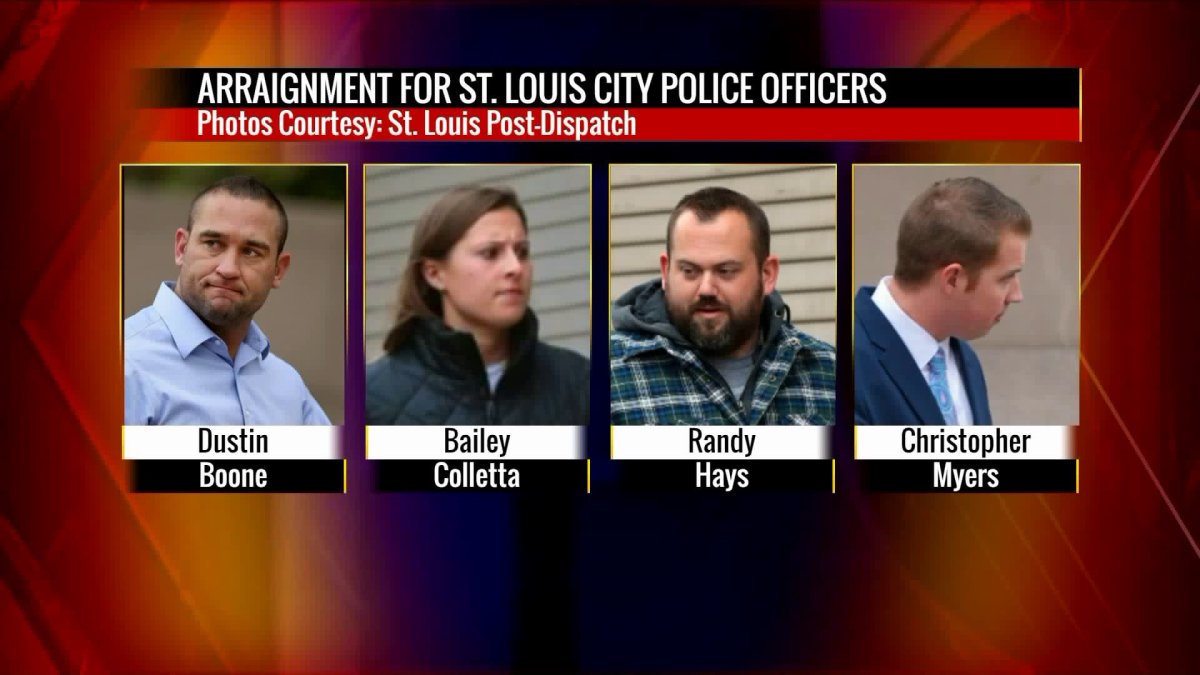
Four Missouri police officers have been indicted by a federal grand jury in connection with the assault of a fellow officer who was working undercover. Officers Dustin Boone, Randy Hays and Christopher Myers with St. Louis Metropolitan Police Department are accused of beating the undercover officer with a riot baton and tampering with witnesses to cover up the incident, according to the Department of Justice. Myers was also charged with destroying evidence. Officer Bailey Colletta was indicted on a charge of providing false statements to a federal grand jury in connection with the incident.
The indictment charges officers Dustin Boone, 35, Bailey Colletta, 25, Randy Hays, 31, and Christopher Myers, 27, with various felonies, including deprivation of constitutional rights, conspiracy to obstruct justice, destruction of evidence, and obstruction of justice. One of the charges carries a maximum sentence of 10 years in prison. The other three carry a maximum of 20 years. All four counts have a maximum of $250,000 in fines. All four officers have been placed on administrative leave without pay.
In September 2017, the officers were assigned to a Civil Disobedience Team, which conducts crowd control, in anticipation of a protest against the acquittal of Officer Jason Stockley in the shooting death of Anthony Lamar Smith. Protests broke out in St. Louis and a 22-year veteran of the St. Louis Police Department — referred to in the indictment as L.H. — was in the crowd working undercover as a protester to document crimes among the demonstrators so law enforcement could make arrests, according to the indictment.
The indictment claims the three officers believed Hall was a protester and assaulted him “while he was compliant and not posing a physical threat to anyone.” The indictment alleges that Boone, Hays and Myers threw Luther Hall to the ground without probable cause and began to kick him and strike him with a riot baton. Once Myers, Boone and Hays learned that Hall was a police officer, the indictment says, they made false statements justifying the assault, contacted Hall to dissuade him from taking legal action and contacted witnesses to try to influence their testimony. Myers also destroyed Hall’s cellphone “with the intent to impede, obstruct, and influence the investigation,” according to the indictment.
The indictment also details text messages between Myers, Boone and Hays prior to the incident. “We really need these f**kers to start acting up so we can have some fun,” Boone texted, after they determined they were going to be on the same team. “A lot of cops getting hurt, but it’s still a blast beating people that deserve it,” said another text from Boone. He also remarked that he would be working with a black officer and referred to him as “a thug that’s on our side.” Hayes also texted Boone “Remember we are in south city. They support us but also cameras. So make sure you have an old white dude as a witness.”
According to the indictment, Officer Colletta — who was in a romantic relationship at the time with Hays, was on the team that night and offered inconsistent explanations as to why they arrested L.H. Initially, Colletta said she had never come into contact with Hall that night. Then, she claimed that she witnessed the arrest and saw Hall taken to the ground “very gently.” Colletta also said the group had “veered off” to arrest Hall, according to the indictment. The next day, she said she learned from her sergeant that they had stopped Hall because he fit the description of a radio dispatch yet in a later statement, she claimed she didn’t recall anyone saying that.
Read more

Federal authorities have made an arrest in the pipe bomb mailings four days after the investigation began. Cesar Sayoc, a 56 year old DJ and former stripper, is accused of sending 13 pipe bombs through the mail to a range of Democrats and critics of the president. Authorities say Sayoc left a trail of forensic and digital evidence behind that authorities used to track him down and arrest him. Prosecutors charged Sayoc with five federal crimes and he faces more than 50 years in prison if convicted on all charges.
Sayoc, who has a long criminal history, was arrested in Florida after investigators linking DNA found on two bomb packages to a sample that was previously collected by the state of Florida. They also matched his fingerprints to one from a separate pipe bomb mailing he sent. Authorities say he had previously filed for bankruptcy and appeared to be living in his van, showering on the beach or at a local fitness center.
Authorities launched an investigation after packages containing homemade pipe bombs were sent to prominent Democrats. The packages were sent to Barack and Michelle Obama, Bill and Hillary Clinton, George Soros, former Attorney General Eric Holder, Congress member Maxine Waters and former CIA Director John Brennan. Investigators say the devices may have originated in southern Florida and were sent through the U.S. Postal Service. The 10 packages being examined had a return address for Democratic Florida Rep. Debbie Wasserman Schultz and on some of the packages, her last name was misspelled.
CNN had to evacuate its New York office in Manhattan after it received what police described as a “live explosive device.” The package was delivered by courier to CNN’s offices at the Time Warner Center in New York and was addressed to the former CIA director John Brennan. The package also contained an envelope containing white powder. Police are also investigating a suspicious package found early this morning that was mailed to actor Robert De Niro’s restaurant in New York. De Niro has frequently publicly criticized the president. Two additional packages were intercepted Thursday, headed for former Vice President Joe Biden in Delaware. Authorities discovered the two packages at post offices in Delaware addressed to the former vice president. At least one of them had been misaddressed and returned to sender. No one was hurt in any of the cases.
Authorities say the devices sent to Soros, Brennan and the Democratic officials appeared to be pipe bombs that were rudimentary but functional. All the explosive devices had similar construction, had timer devices and at least one contained projectiles, including shards of glass. Sources say the bombs were unstable and could have been set off by handling. The FBI said all the packages were in manila envelopes with bubble-wrap interior and had six American flag Forever stamps on the envelopes.
Investigators are analyzing the crude devices to reveal whether they were intended to detonate or simply cause fear before the Midterm Election. Law enforcement officials said that the devices, containing timers and batteries, were not rigged to explode upon opening. They are uncertain whether the devices were just poorly designed or never intended to cause physical harm.
Read more

After weeks of denials and shifting narratives on the whereabouts of missing journalist Jamal Khashoggi, the government of Saudi Arabia has finally admitted that Khashoggi is dead. Khashoggi entered the Saudi Consulate in Istanbul on October 2 and was never seen again. Saudi officials now say Khashoggi was killed in a “fistfight” inside the consulate and that 18 Saudis had been arrested in connection with the death.
Turkish officials still maintain that Khashoggi was tortured, murdered and dismembered by a squad of 15 Saudi hit men shortly after entering the Saudi Consulate in Istanbul. They claim that audio and video recordings show Saudi officials used a bone saw to dismember Khashoggi’s body. They maintain that it was a premeditated hit carried out by a squad of hit men and that one of the men was a forensic specialist specifically brought in to conceal the crime.
CNN aired CCTV footage obtained from the Turkish authorities, showing the Saudi agent Mustafa Mohammed Madani, a member of the 15-man team, leaving the consulate by the back door. Madani was dressed in Khashoggi’s clothes, aside for mismatched shoes. He had also put on a fake beard that resembled Khashoggi’s facial hair, his glasses and his Apple Watch. Madani, who was of similar age, height, and build to Khashoggi, left the consulate from its back door and was later seen at Istanbul’s Blue Mosque, where he went to a public bathroom and changed back to his own clothes and discarded Khashoggi’s clothes.
The body double footage bolstered Turkish claims that the Saudis always intended either to kill Khashoggi or move him back to Saudi Arabia. Anonymous Turkish officials believe that Madani was brought to Istanbul to act as a body double and that “You don’t need a body double for a rendition or an interrogation. Our assessment has not changed since October 6. This was a premeditated murder, and the body was moved out of the consulate.”
An anonymous Saudi official claims Khashoggi had been threatened with kidnapping by Maher Mutreb and when he resisted, he was restrained with a chokehold, which killed him. Madani then left the consulate through the back door dressed in Khashoggi’s clothes. Khashoggi’s body was rolled up in a carpet and given to a “local cooperator” for disposal. The official claims it was Mutreb who overstepped by threatening a kidnapping and accidental killing. The team then filed a false report indicating they let Khashoggi leave after he warned of Turkish police interference. The official provided Saudi documents indicating the operation was part of a wider initiative to bring expatriate dissidents home and the original plan was to keep Khashoggi in an Istanbul safe house for a period where he would be persuaded to return home or eventually released. Many have been skeptical of their claims and still believe the Crown Prince Mohammed bin Salman ordered the hit.
Saudi officials again changed their story after Saudi Arabia’s attorney general said that evidence shared by Turkish officials suggests that the killing was premeditated. They now admit that the killing was premeditated and carried out by a rogue team, still maintaining that Crown Prince Mohammed bin Salman had no prior knowledge of the killing. Turkish President Recep Tayyip Erdogan has directly accused Saudi Arabia of the premeditated murder, calling it a political killing orchestrated by Saudi officials. Erdogan urged Saudi Arabia to disclose who ordered the murder of Saudi journalist Jamal Khashoggi, as well as the identity of a “local cooperator” involved in the murder plot. He also called for the Saudi suspects to be tried in Turkey. Erdogan said Turkey has more information about the case than it has shared so far, suggesting he could release more details if the Saudis refuse to reveal vital information.
Read more
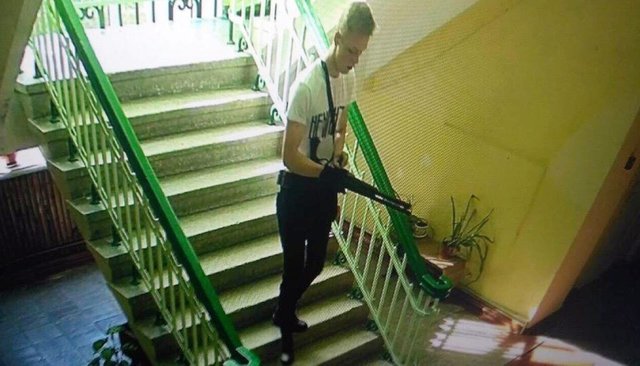
Russian officials say the gunmen who killed 21 people and wounded 53 more before killing himself at a vocational school in Crimea was an 18 year old student of the school. The shooter, identified as Vladislav Roslyakov, described as a shy loner, also set off an explosive device. He committed suicide in the library after the assault at Kerch Polytechnic College. Officials are still investigating a motive in the attack which is the deadliest instance of school violence in the region since the 2004 Beslan terror attack, which killed 333 people, most of them children.
At first, officials reported a gas explosion at the school but later said an explosive device had ripped through the cafeteria during lunchtime in a suspected terrorist attack. Eventually, the attack was classified as a mass murder attack at the school carried out by one person. The Investigative Committee said the homemade explosive device rigged with shrapnel went off in the school lunchroom and a second explosive device was later found and destroyed.
Guns are tightly restricted in Russia. Civilians can own only hunting rifles and smooth-bore shotguns and must undergo significant background checks. Local officials said Roslyakov had only recently received a permit to own a shotgun which he bought on September 8th. Officials say Roslyakov bought 150 rounds of ammunition at a gun shop on October 13. Just four days later on October 17th, he entered the school grounds at about 11:46 a.m. and began his attack. Several witnesses described the gunman walking up and down the halls at Kerch Polytechnic College and firing randomly at classmates and teachers. He also fired at computer monitors, locked doors and fire extinguishers. A survivor of the attack said the shooting lasted about 15 minutes.
Security footage at the school shows Roslyakov enter the technical college carrying a sports bag and bypassing security. He then entered the school’s lunchroom with a rucksack and leaving without it. The footage captures him going up to the school’s first floor empty-handed just before a fire ball and a massive explosion blows out windows and doors on the ground floor. Roslyakov is then shown walking towards a female teacher in a corridor and gunning her down, before shooting an approaching student. A security camera image carried by Russian media showed Roslyakov, calmly walking down the stairs of the school with the shotgun in his gloved hand while wearing a T-shirt emblazoned with the word “Hate.”
A video taken by an unknown survivor of the attack shows a terrified group of students and staff running through a hallway as gunshots and screaming can be heard nearby. The group talk in whispers as they search for safety, not knowing where the gunmen is. The video shows them briefly in a classroom and then another hallway. They approach a stairwell and see a body on the stairs below before turning back down the hall and down another stairwell. Terrified, they cautiously look down the stairs before making a run through a doorway and to an outside exit.
If you’re thinking some details in this story sound very familiar you are correct. His outfit resembled that of Eric Harris, one of the perpetrators of the 1999 Columbine High School massacre. The Columbine attackers also tried but ultimately failed to detonate an explosive device in the cafeteria. Similar to Columbine, Roslyakov also retreated to the school library to commit suicide after the attack. A friend of the shooter said he had an interest in the Columbine school shooting in the US. Also leading to speculation that the massacre was a copycat crime is the fact that some Russian news outlets have reported that Roslyakov belonged to a fan club on social media for the columbine shooters. Russian news outlets have dubbed the shooting the “Russian Columbine,” because of the similarities.
Read more
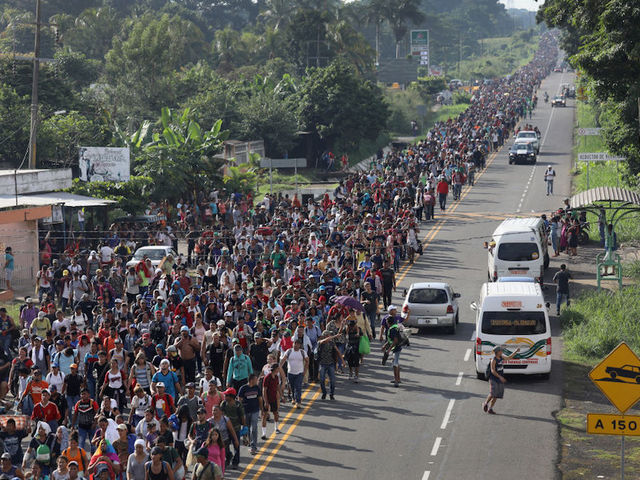
Thousands of Central American undocumented migrants are heading toward the United States as they flee rampant violence and economic deprivation. The caravan of about 4,000 Honduran migrants has reportedly grown to around 7,000 as their journey continues toward the U.S. border. The US President has threatened to cut foreign aid to Central American countries, nullify the U.S.-Mexico-Canada trade deal if Mexico doesn’t stop the migrants, and even deploy troops to “close” the border.
The Mexican government had ordered the migrants to submit to processing by the immigration authorities at a legal border crossing but many said they feared being deported and the group kept moving north. The Mexican authorities warned as the migrants approached that only travelers with valid documents and visas, or with claims for asylum or other forms of protection, would be allowed into Mexico. They threatened deportation for those who tried to enter illegally and said they would process the migrants one by one.
Mexican officials said they received more than 1,000 asylum requests from caravan members at the border. Some migrants were taken to a local fairground that had been converted into a temporary government shelter. Many others remained on a bridge spanning the Suchiate River, waiting to be processed by Mexican officials. The vast majority of the caravan’s members have refused to apply for refuge in Mexico, worried that the process could lead to their detention or deportation.
Mexican officials have said migrants seeking asylum are under no legal obligation to apply in Mexico. Under a proposed bilateral agreement, United States border officials would be able to legally turn back asylum seekers who first pass through Mexico, forcing them to seek protection south of the border. Mexican officials encouraged the migrants to apply for asylum but made little effort to halt the massive group that stretched along this city’s main highway for more than a half-mile. Federal police officers were present on the road, monitoring the procession, and a police helicopter circled overhead, but the authorities allowed the procession to carry on unimpeded.
The caravan is part of a tradition of mass migrations, often organized by advocacy groups, meant to provide safety in numbers to migrants, who face many threats to their safety along the perilous migrant trail. These caravans usually number in the hundreds, passing through unnoticed, but the current caravan, which continues to grow, is by far the largest on record.
Many of the migrants have previously lived in the United States, for years or even decades, before being deported. Many say they joined the caravan to reunite with their children, or to resume old jobs and seem undeterred by the American authorities who had apprehended them and promised to keep them out. Some say they returned to their home countries voluntarily when their visas expired but have longed for a better life. Some members of the caravan plan to apply for political asylum, citing the threats they’ve received from gangs in Honduras or, in Nicaragua, the government’s assaults on the political opposition.
Read more












